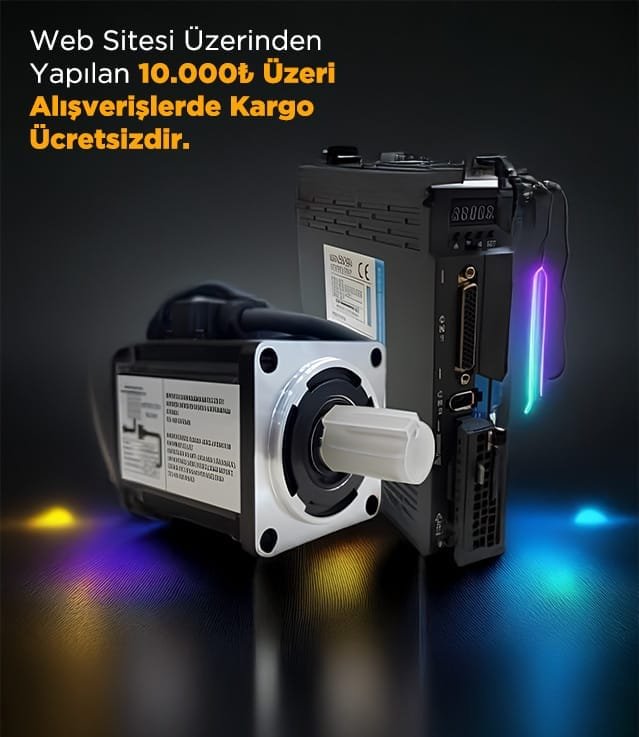
İçindekiler
What is a Jumper Cable? What Does It Do?
The jumper cable is one of the most commonly used auxiliary elements, especially in electronic circuit projects. It is used to make temporary and solderless connections between parts such as breadboards, microcontrollers (e.g. Arduino, Raspberry Pi, Servo Drive) and sensors. They have male or female pins on the ends, allowing for compatibility between different types of connections. Jumper cables offer a safe and practical solution for low current and voltage systems.
These cables are great for prototyping, building test circuits and educational projects. They offer flexibility in arranging complex connections and allow for quick plugging and unplugging. Cable colors make it easy to distinguish between lines in circuits. The use of jumper cables is indispensable for both professional engineers and beginner electronics enthusiasts.
What is a Jumper Cable?
Jumper cables are thin, flexible cables used in electronic projects to make temporary connections between circuit elements. They are generally preferred when working with breadboards and microcontroller boards. They are equipped with male or female connectors at the ends, allowing connections to be made without soldering.
These cables were developed to speed up prototyping processes and reduce the error rate. They find a wide range of uses from electronic training sets to industrial applications. They are ideal for low voltage and low current applications.
What Does Jumper Cable Do?
The main function of jumper cables is to transmit signals, data or power between different electronic components. They allow temporary connections to be made on the breadboard between microcontroller pins and components such as sensors, motor drivers or LEDs.
Thanks to its solderless connection feature, it becomes very easy to create test circuits. Especially in projects with development boards such as Arduino, Raspberry Pi, ESP32, jumper cables are indispensable.
What are Jumper Cable Types?
Jumper cables are divided into three basic types according to their end structures: Male-Male, Female-Female and Female-Male jumper cables. This diversity makes it easier to interconnect different electronic components. Each type of cable is designed for a specific connection scenario and the right choice is crucial for stable and healthy circuit operation.
Male-to-Male Jumper Cable
Male-to-male jumper cables have metal pins protruding outward at both ends. This structure is suitable for connecting breadboard to breadboard or breadboard to male input components. It is one of the most commonly used jumper cable types.
By connecting to the pins of the development boards, it is possible to establish fast connections with sensors or modules. They are usually preferred in the testing phase because the cable can be easily removed and reattached to different places.
Female-to-Female Jumper Cable
Female-to-female jumper cables have inward sockets at both ends. This makes them ideal for connecting to components with male pins. Especially used with microcontroller modules or sensors with male outputs.
This type of cable is suitable for creating a secure and robust connection while enabling data exchange between development boards. Longer versions are also available to meet complex connection needs.
Female-to-Male Jumper Cable
Jumper cables, male on one end and female on the other, are used to connect two components with different types of pin structure. This flexibility provides a great advantage in meeting the various hardware connection requirements encountered in projects.
This type is preferred in complex systems where male-to-male or female-to-female cables are insufficient. It also saves time during circuit design by increasing the variety of connectors.
What are the Main Features of a Jumper Cable?
Jumper cables consist of flexible stranded copper conductors, usually with a PVC coating. This makes them both durable and flexible. They are compatible with many different electronic components thanks to the connectors on the cable ends.
It also provides convenience to users with different length and color options. Color codes prevent confusion in circuit arrangements, while different lengths offer the advantage of adapting to the physical design of the circuit.
Jumper Cable Color Codes and Pin Structures
Jumper cables come in different colors and these colors are mostly used by the user to distinguish signal types. For example, red is usually used for +V (positive voltage) and black for GND (ground). Yellow, blue and green colors are usually used for data transmission lines.
Pin structures are divided into male and female. While male pins are usually protruding and rigid, female pins are in a structure that can accommodate this protrusion. Thus, an error-free circuit can be established by choosing the correct connection type.
Where is Jumper Cable Used?
Jumper cables are tools that enable the quick and practical establishment of temporary connections in electronic circuits. They are widely used in both amateur and professional electronic projects as they provide great convenience in prototyping, testing and development processes. Their most common applications include robotics, automation systems, microcontroller-based circuits and motor control systems.
Jumper Cable Usage in Robotic Systems
In robotic projects, temporary connections between different modules and sensors are provided with jumper cables. Thanks to these cables, it becomes very easy to connect parts such as the robot’s motor driver, distance sensor or camera module.
Especially in robot designs in the test phase, the ability to make connections without soldering accelerates the prototyping process. The use of jumper cables provides great convenience in terms of detecting and reconfiguring faulty connections.
Jumper Cable Usage in Stepper Motors
Stepper motors are usually used with motor drivers and jumper cables are preferred to connect these drivers to the microcontroller. Jumper cables play a critical role, especially in tasks such as transmitting motor direction and step signals.
Correct pin matings are important for the motor to work properly. For this reason, both cable type and connection diagram must be determined correctly. Incorrect connections may cause incorrect operation or damage to the motor.
Jumper Cable Usage in Servo Motors
Servo motors are usually controlled by PWM signal. Jumper cable connections are established to receive this signal through the microcontroller. In addition, power and ground lines are also provided with jumper cables.
Especially in small-scale projects, testing of the servo motor becomes very practical with jumper cables. However, for powerful servo motors that draw high current, the thickness and quality of the cable should be considered.
Which Jumper Cable Should be Used for Which Type of Servo Motor?
While thin jumper cables may be sufficient for low current motors such as micro servo motors, thicker and higher quality jumper cables should be preferred for larger servo motors. Since these motors draw high current, thin jumper cables may heat up or melt.
Standard jumper cables are particularly suitable for motors operating in the 5V-6V range. However, for motors operating at 12V or higher voltage, the cable cross-section should be increased and low resistance connections should be established.
Compatibility with Different Jumper Cable Types and Servo Motors
Male-female jumper cables are the most preferred type for connecting to servo motor control boards. In this way, the signal, power and ground pins of the motor can be connected in the correct order. Thanks to the colors of the cables, it is also easy to distinguish which cable does which task.
Some special servo motors may require special connector ends. In these cases, connectors such as JST or Molex can be installed on the jumper cable ends. If the appropriate connector is not used, the connections will be loose and the motor will not work properly.
Optimal Jumper Cable Thickness and Material Preference
Generally, jumper cables with a thickness of 22 AWG are suitable for hobby projects. This thickness offers both flexibility and sufficient current carrying capacity. However, for systems requiring higher current, 20 AWG or thicker cables should be preferred.
Cables with copper inner conductors should be preferred because they have high conductivity. Although PVC is preferred as an outer coating, silicone coated jumper cables are more durable in high temperature or chemical environments.
Common Mistakes When Using Jumper Cables
The most common mistake is connecting cables to the wrong pins. This can cause the system to stop working or damage components. Using low-quality cables can also lead to connection problems.
Another common mistake is the use of thin jumper cables for high current lines. This can both pose a fire risk and prevent the motors from working properly. When making connections, make sure that the cable ends are fully seated and not loose.
Diğer Blog Yazılarımız








